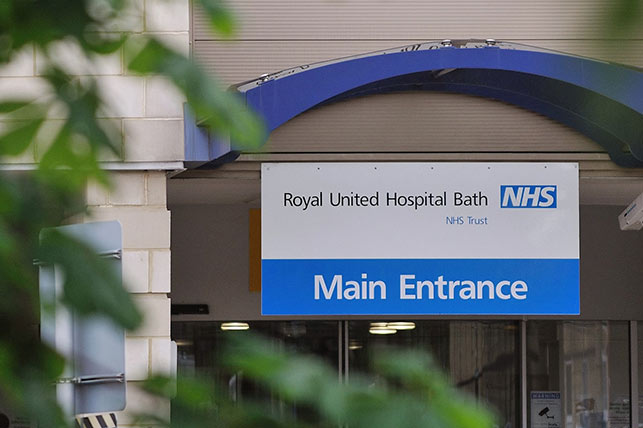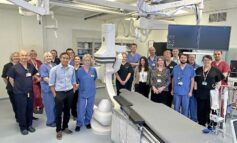The Royal United Hospital in Bath is marking World Thrombosis Day on Monday 13th October by sharing real life examples to raise public awareness of the condition.

Deep Vein Thrombosis (DVT) is the term given to a blood clot that develops within a deep vein, usually in the leg.
A Pulmonary Embolism (PE) is when all or part of the DVT breaks off, travels through the body and blocks the pulmonary arteries.
Venous Thromboembolism (VTE) is a collective term for both DVTs and PEs. Though certain symptoms can indicate a VTE (such as swelling, tenderness, a ‘deep ache’ or hot skin in the affected area) the condition can often develop without symptoms.
Although there are a number of key factors than can increase a person’s risk of developing a Deep Vein Thrombosis (DVT), this serious condition can also affect the young and healthy.
Sian Dyson, Resilience Manager at the RUH, has a medical background as a paramedic, so is well-used to spotting the warning signs for serious conditions in her own patients.
However, when she developed severe calf pain following a running injury, she did not immediately consider Deep Vein Thrombosis (DVT) as the potential cause:
“I am 33 years old and up until last November was very fit and healthy. I normally do quite a lot of exercise – lots of horse riding and running. Last year, I ran 4 half-marathons.
“During the final one in October I sustained an injury. The pain got progressively worse but I just put it down to a soft tissue injury and rested as much as I could. Finally, the pain got worse and I decided that I needed to get it checked out.”
Scans revealed that she had developed a DVT and further tests showed that she suffered from the condition thrombophilia – an increased tendency for the blood to clot which can lead to a much higher risk of developing DVT.
“Having qualified as a paramedic, I am slightly embarrassed by the fact that I didn’t immediately put two and two together. After all, to my knowledge, I was a fit and healthy individual so didn’t expect to be at risk of DVT. However, I am glad I did finally take notice of the warning signs.”
As well as being alert to potential symptoms, the RUH is also urging people to consider their risk of developing a DVT, especially if they are due to come to the hospital for a procedure.
The NHS Choices website has a short and simple online quiz for people to use to determine if they have an increased risk (visit www.nhs.uk and search ‘VTE self-assessment’).
Josephine Crowe, consultant in Haematology at the RUH, said: “There are certain factors that could indicate that a patient has a higher risk of DVT – for example being overweight, a smoker, or taking the combined oral contraceptive pill.
“All patients admitted to the RUH have a risk assessment to determine the likelihood of them developing a blood clot.
“If you are a patient and you have reason to believe that you are at an increased risk of developing thrombosis we would encourage you to tell the ward staff upon being admitted to hospital.
“We would rather prevent a thrombosis than have to treat one that develops during your stay.”



